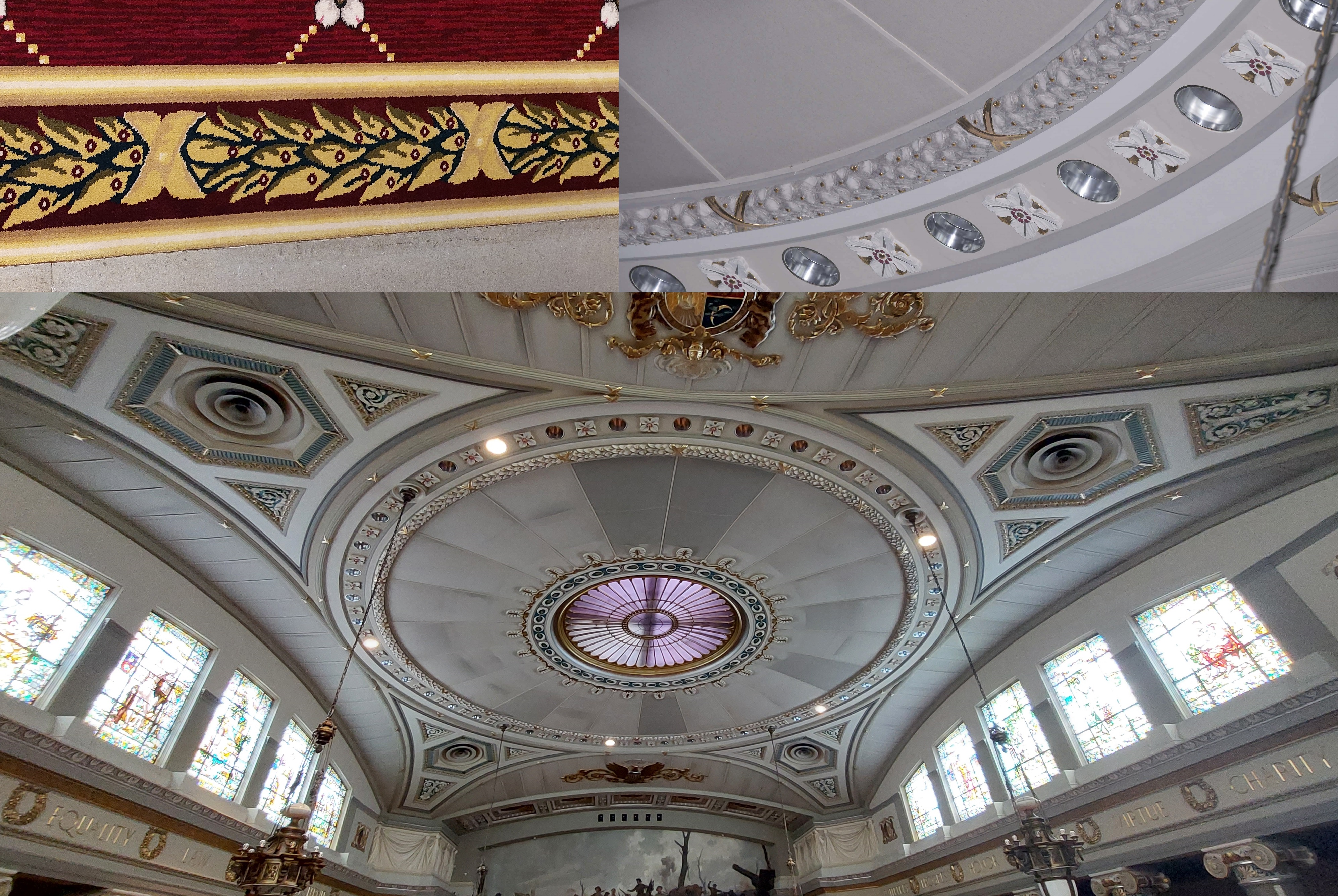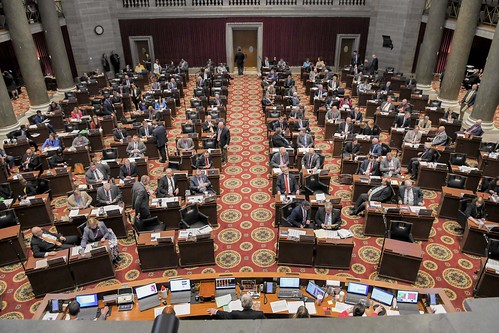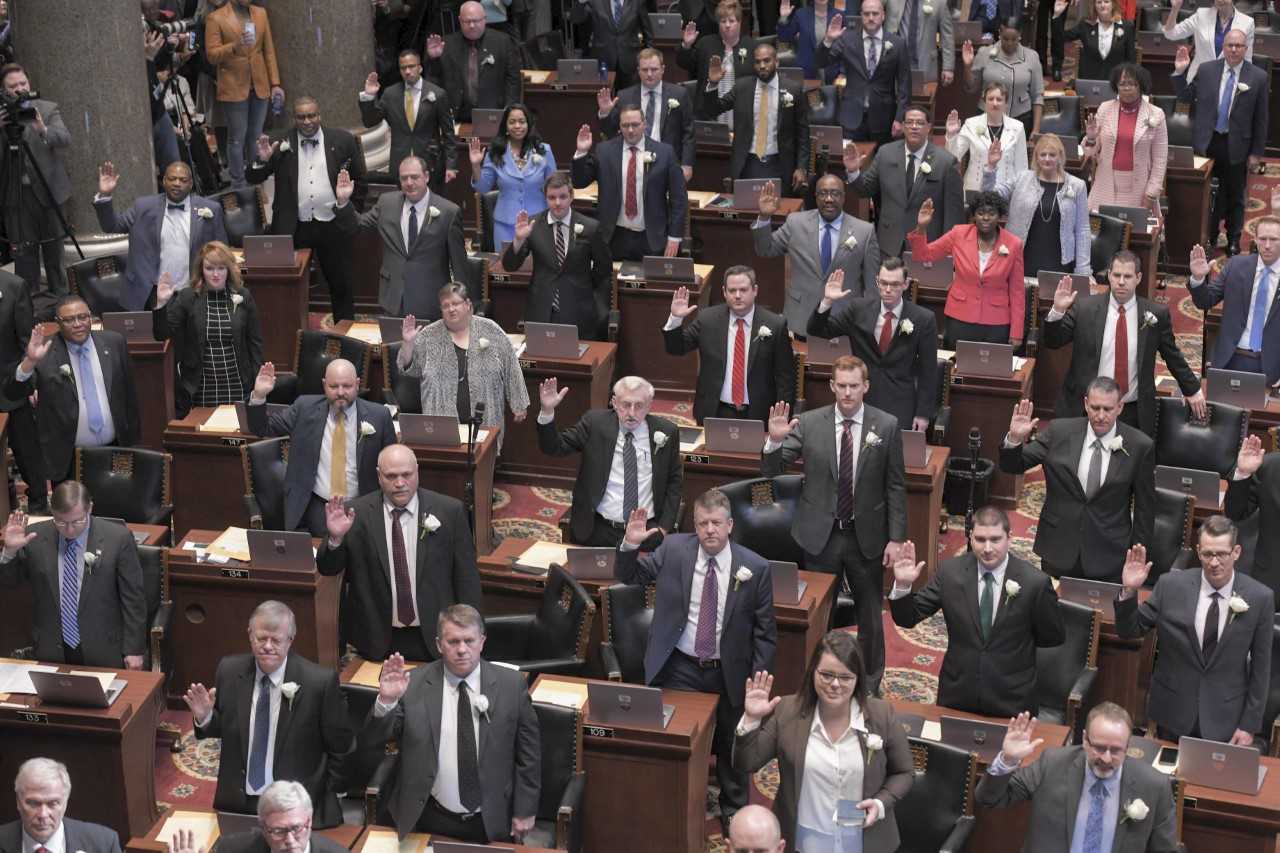When the Missouri House convened in January for this, the 102nd General Assembly, it did so in a freshly renovated House Chamber featuring new voting and message boards; refinished woodwork; updated wiring; and most importantly, badly needed new carpeting.
You can see photos from before, after, and throughout that project in the gallery below (and linked here), and scroll down to read more about it.
The work done during the summer and fall of 2022 was overseen by the Chief Clerk and Administrator of the House, Dana Rademan Miller. Among other things, Miller has a deep appreciation for the history and cultural significance of the Capitol, and she brought that to this project.

She tells us that when the Capitol was being built more than 100 years ago the carpeting in the House was originally wool. It has been replaced several times since then, the last time having been in 2008.
In what was intended to be a cost saving decision the carpet installed at that time was synthetic. Instead of saving money, this proved to be a costly choice that hampered business in the Chamber because the synthetic carpet built up static electricity more quickly than had the wool.
“Pretty quickly after we had that installed we were noticing that members were, as they were populating the chamber and walking about, they were building up a static charge and then they were shocking each other, but they were also shocking their voting boxes when they would go to vote,” Miller explained. “A member would go to vote and they would shock their box, which then would create a chain reaction and it would shut their box down and … it would shut all of the voting stations behind it all the way to the back of the room.”
This problem developed at the beginning of a session, and obviously the voting system was of primary importance, so staff at the time had to quickly come up with a short-term fix.
The wiring in the chamber was replaced that next summer to alleviate the static issues. Now the Chamber is back to having wool carpeting not just for the sake of historical significance and functionality, but also because wool holds up better than did the synthetic.
A lot of thought was put into the visual design elements of this new carpeting by Miller and others with a mind for history. It leans heavily on symbology already found elsewhere in the Chamber.

Miller said when these symbols were built into the Chamber they were meant to represent qualities that, it was hoped, would be found in the representatives in the House as well as in all people.

Among other work done during this time, professional woodworkers refinished the fine features of the dais and rostrum. When carpet was removed from the stairs leading up either side of the dais, a fine cork floor – chosen for that structure in part to control sound – was uncovered, and it was able to be saved.
The members’ desks from the House floor were sent to a St. Louis company to be refinished for the first time in about 35 years, and before-and-after photos show that now they look virtually new. Most of these desks are original to the building, their number having increased as the size of the House has increased since 1917.
The removal of the carpeting and those desks also presented an opportunity to update the wiring beneath the Chamber floor. This work will better serve the modern laptops and new voting boards. It also added a system that will help the hearing impaired.
The replacement of the voting boards had been a priority for Miller for years. The old ones dated back to 1997 and were still running on a program that relied on Windows ’97.
Finally, the sound desk – which had not been original to a Chamber that originally had no sound system – was updated to a smaller, more efficient design.
For Miller, as someone who admittedly loves the Capitol and its history, it has felt good to get to leave her stamp on the Chamber by having a project like this take place during her time as Clerk.
She says there is still work to be done in the Chamber, including some plaster detailing and decorative paintings that need to be touched up. She said there has been money set aside by the General Assembly for restoration of the Capitol as a whole, but the legislature will have to give more attention to that issue.
“We need the full commitment from the General Assembly … we’ll see how that turns out,” said Miller. “[The Capitol is] 100 years old and it has issues, as any historic home would have. You have to do the maintenance and the upkeep and you have to do the remediation at times when you have environmental factors that have taken a toll, and we have all of that.”


